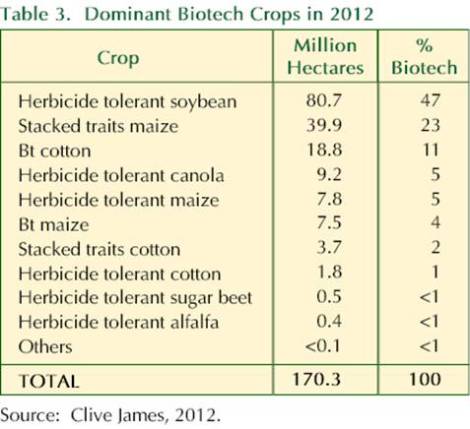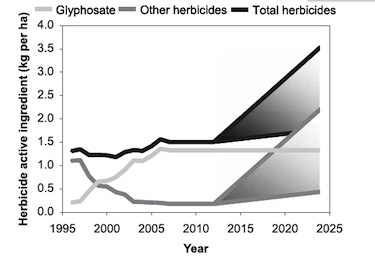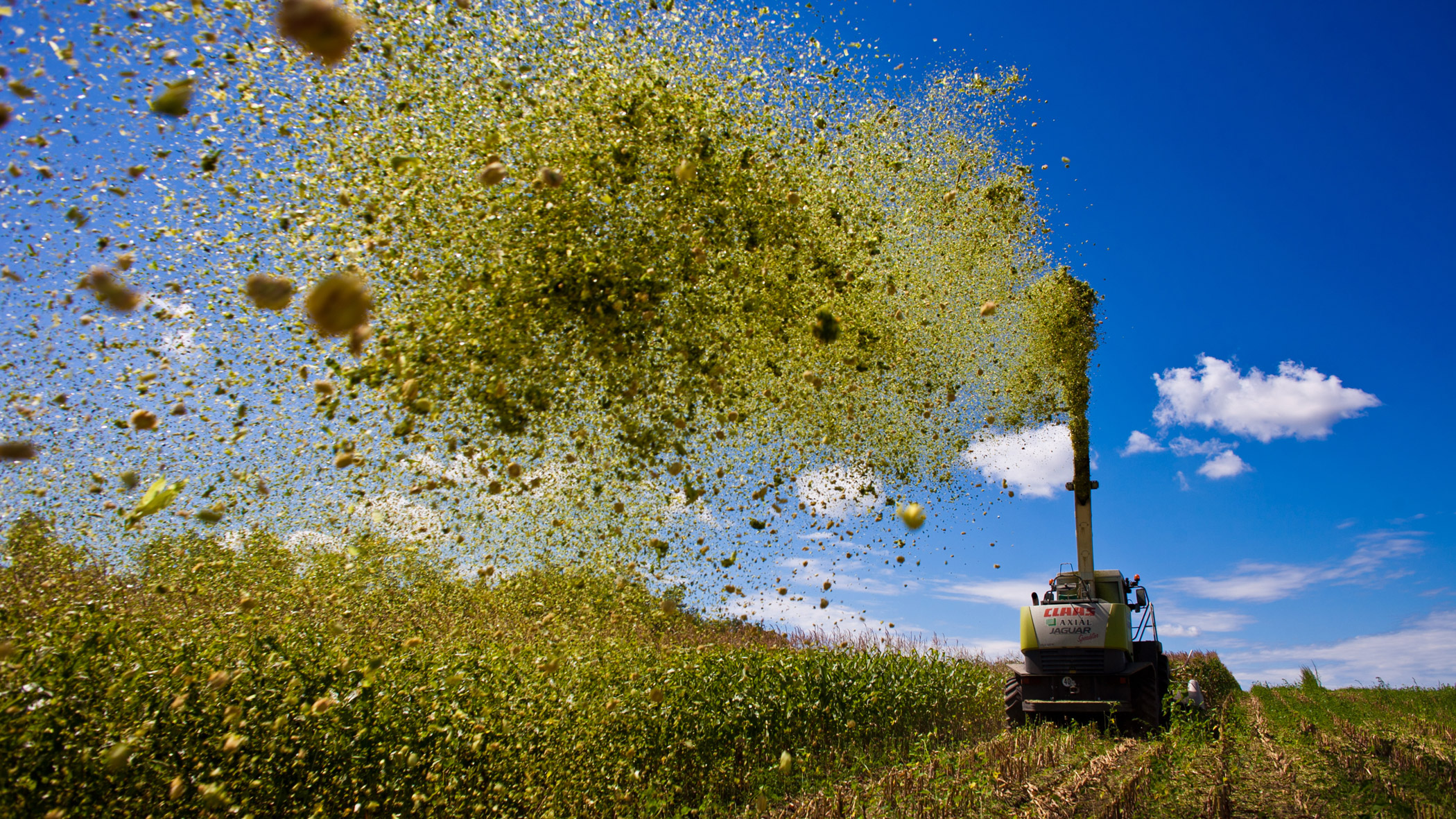Editor’s note: After we ran What I learned from six months of GMO research: None of it matters, Nathanael Johnson’s essay concluding his “Panic-Free GMOs” series, we heard from a lot of people who think that GMOs really do matter. We’re publishing three two responses: one from Ramez Naam, author of The Infinite Resource: The Power of Ideas on a Finite Planet; and — to kick things off today — one from Tom Philpott, whose work long graced these pages and who is now at Mother Jones. (We’d planned to run another response from Denise Caruso, author of Intervention: Confronting the Real Risks of Genetic Engineering and Life on a Biotech Planet but that piece did not materialize.)
Before I respond to Nathanael Johnson’s assertion that the “stakes are so low” in the debate over GMOs, I want to address a smaller point. “The debate isn’t about actual genetically modified organisms — if it was we’d be debating the individual plants, not GMOs as a whole,” Johnson writes.
That’s a good place to start: actually existing GMOs. What traits are on the market today, in use by farmers? First, I’ll note that there’s no shortage of land devoted to GMOs. Since the novel seeds hit the market in 1996, global GM crop acreage has expanded dramatically, reaching 420 million acres by 2012, reports the International Service for the Acquisition of Agri-biotech Applications. That’s a combined landmass more than four times larger than California. The pro-GMO ISAAA hails this expansion as “fastest adopted crop technology in the history of modern agriculture.”
Yet, for all of that land devoted to GMOs, there are just two traits in wide use: herbicide resistance and pest resistance (Bt). Note, in the below ISAAA chart, the “<1” at the bottom. That represents the percentage of all global GMO acres planted in crops that aren’t either herbicide- or pesticide-tolerant: that is to say, less than 1 percent.

Now, one might ask: But isn’t the industry on the brink of rolling out wonder crops — new varieties that are more nutritious, or use water more efficiently, or need less fertilizer? One way to tell is to peek into the U.S. Department of Agriculture pipeline of new GMO products being considered for deregulation. Here we can expect to find the stuff the industry has tested and found rugged and ready for field conditions. What’s in there? Thirteen products — nine of which involve herbicide tolerance or insect resistance. Of those nine, five are engineered to resist two herbicides — a dispiriting trend I’ll explore more below. The others are an apple variety engineered not to brown, a eucalyptus designed to resist freezing, a potato charged with bruising less easily, and an alfalfa type meant to contain less lignin.
Something tells me that none of these novelty items are destined to crack ISAAA’s <1 percent box.
It’s true that rice engineered to deliver beta-carotene is due out in 2016 in the Philippines, and that citrus trees engineered to resist a ruinous pathogen have shown promise. Then there are those virus-resistant GM papayas in Hawaii — though it should be noted that the state’s entire papaya production covers about 2,000 acres, the size of a moderately sized corn farm in Iowa. But until the “golden rice” and the novel oranges prove effective, durable, and acceptable to a large swath of growers, we live in a world in which upwards of 99 percent of GMOs are engineered for the two traits mentioned above.
And that means that actually-existing GMOs remain essentially an appendage of the pesticide industry, which has dominated the technology from the start. But a fixation on pesticides doesn’t fully answer the question of why the industry’s vaunted innovation has stagnated into variations on two themes, with a few promising products at the margin. Monsanto, for one, has signaled its intention to diversify away from pesticides by entering what might be called the climate-change-services business; and back in 2008, the company pledged to create seeds that would “reduce by one-third the amount of key resources required to grow crops by the year 2030,” while also doubling yields.
More than five years later, where’s the progress? For that, I think, we have to look to the fact that genes and traits (the cool things we want plants to do in the field) don’t always track on a one-to-one basis. There are single genes that confer resistance to particular herbicides or express the toxic-to-insects trait of Bacillus thuringiensis, the basis of Bt corn and cotton. But there’s no one gene that regulates the way a plant uses water — which probably explains why Monsanto’s “drought-tolerant” corn, deregulated by the USDA in 2012, has fallen with such a thud. In its Final Environmental Assessment of the crop, the USDA delivered quite a caveat. “It is prudent to acknowledge,” the agency declared, that the Monsanto product’s ability to fend off drought “does not exceed the natural variation observed in regionally-adapted varieties of conventional corn (representing different genetic backgrounds).” Translation: In areas of the U.S. corn belt where drought is typically a factor, conventional breeders had already developed varieties that do just as well under drought conditions as Monsanto’s genetically altered product.
Churning out crops designed to require less nitrogen — which involves another complex process beyond the scope of a single gene — has so far proven to be an equally vexed project.
So what we have here, in essence, is a bit of a carnival-game scheme: an industry that lives by trumpeting elusive promises while quietly profiting from old tricks. In that sense, I agree with Johnson: stakes are low in the GMO debate, in that it’s an industry that’s wildly overhyped — by champions and foes alike.
But there’s another sense in which stakes are high indeed. The industry’s core traits, herbicide and pesticide resistance, have proven vulnerable. Nearly half — and growing — of all U.S. farms are plagued by weeds resistant to Monsanto’s herbicide Roundup, and farmers have responded by jacking up their Roundup doses and adding to them older, more toxic herbicides. Meanwhile, a pest called the western corn rootworm has evolved resistance to Bt corn. Here’s NPR’s Dan Charles, writing last summer:
It appears that farmers have gotten part of the message: Biotechnology alone will not solve their rootworm problems. But instead of shifting away from those corn hybrids, or from corn altogether, many are doubling down on insect-fighting technology, deploying more chemical pesticides than before. Companies like Syngenta or AMVAC Chemical that sell soil insecticides for use in corn fields are reporting huge increases in sales: 50 or even 100 percent over the past two years.
The failure of these products — a profitable failure, if you make both GMOs and pesticides — has brought industrial-scale agriculture to a crossroads. Farmers could respond by making tweaks that have been proven to maintain productivity while slashing herbicide, insecticide, and fertilizer use — simple changes like adding another crop to the rotation and planting fall cover crops, as demonstrated by a landmark 2012 study by Iowa State University researchers.
Such a relatively minor change in farming practices would bring enormous benefits to society — to name a few, more carbon stored in soil, less fouling of drinking water with agrichemical runoff, and greater resilience to drought in the heart of the U.S. grain belt. U.S. farm policy could and should underwrite a shift to a more diversified and low-input agriculture — an unlikely prospect, given that the industry deftly invests a chunk of its profits in lobbying Congress, and that its “feed the world” rhetoric has won over a broad swath of progressive thought leaders.
Or farmers could head down the path paved for them by Monsanto and its very few peers in the agrichemical/GMO game, including Dow and DuPont. This way involves responding to the plague of resistant weeds by adding yet another herbicide to the mix, through those double-herbicide-resistant products now marching through the USDA’s deregulation process.
In a 2012 paper, Penn State researchers pondered what would likely happen if those products make their way onto farm fields. Chances are “actually quite high” that they will give rise to a new generation of superweeds that resist both Roundup and the older, more toxic herbicides that will come into use. And farmers will likely respond just as they responded to the advent of Roundup resistance — by applying ever higher doses. Here’s what the Penn State team envisions:

From Mortensen, at al, “Navigating a Critical Juncture for Sustainable Weed Management,” BioScience, Jan. 2012The authors predict that glyphosate (Roundup) use will hold steady at high levels — and use of other herbicides, like 2,4-D, will soar.
So it seems to me that the stakes in this fight are indeed quite high. Yet, given what’s going on within the halls of the USDA and on our farm fields — corn and soy covers more than half of U.S. cropland, and nearly 90 percent of it is GMO — I wonder if the agrichmemical industry hasn’t already won.
Next: A very different perspective from Ramez Naam.



